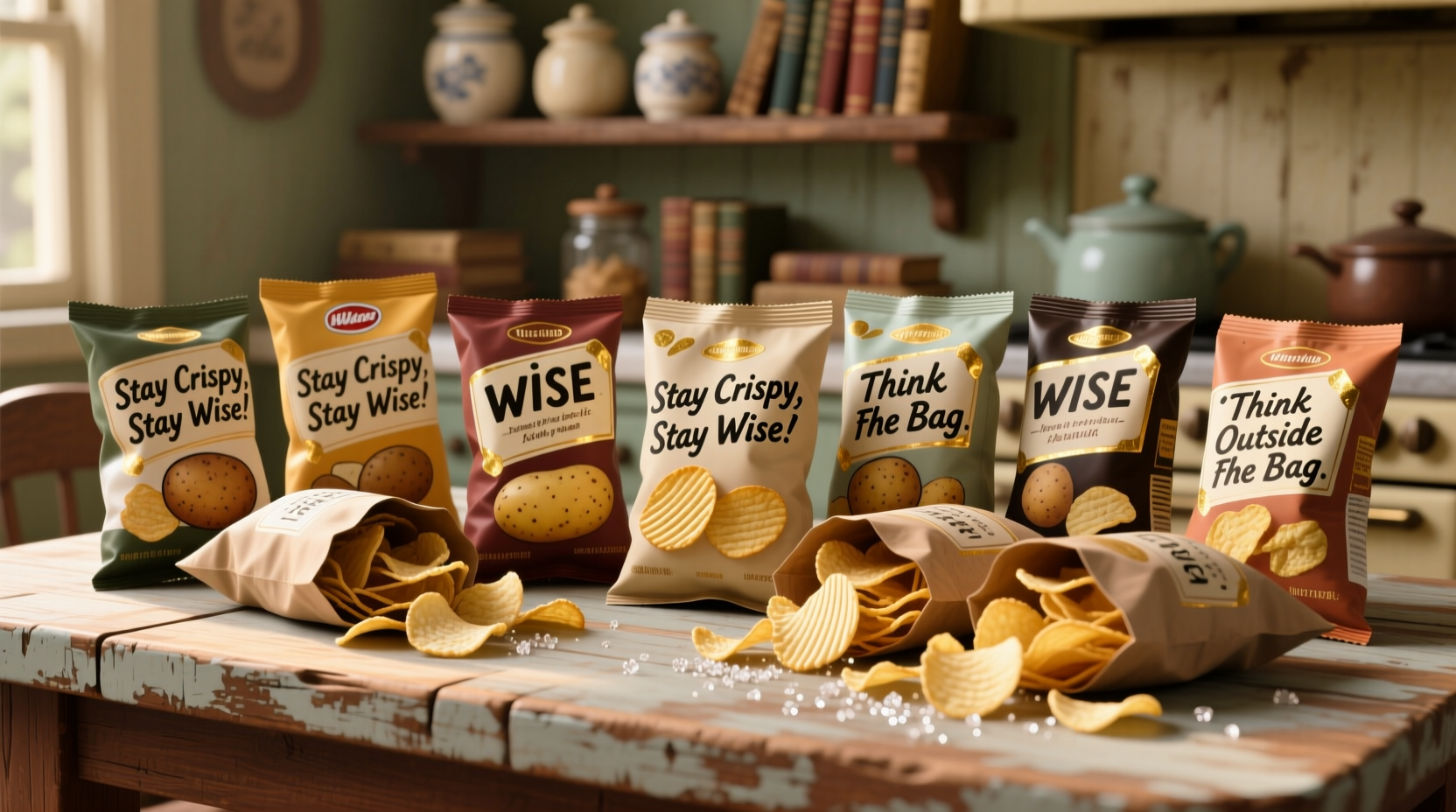The Enduring Legacy of Wise Potato Chips
When you reach for a bag of Wise potato chips, you're connecting with a snack food tradition that spans more than 100 years. Founded during America's snack food boom in 1921, Wise Foods has maintained its regional stronghold while developing distinctive characteristics that set it apart from national competitors. Unlike many snack brands that have been absorbed by multinational corporations, Wise has preserved its regional identity while adapting to modern consumer preferences.

Understanding Wise's Production Philosophy
What makes Wise potato chips different begins with their production process. While many national brands use continuous fryers, Wise maintains a commitment to kettle cooking for many of their products. This traditional method involves batch cooking in small vats, which creates a distinctive texture profile—thicker, crunchier chips with more pronounced potato flavor. The company sources potatoes primarily from the Northeast and Mid-Atlantic regions, contributing to their regional character.
| Production Method | Wise Potato Chips | National Brand Average |
|---|---|---|
| Cooking Process | Kettle-cooked (batch) | Continuous frying |
| Oil Temperature | Lower, slower cooking | Higher, faster cooking |
| Texture Result | Thicker, crunchier | Thinner, more uniform |
| Flavor Absorption | Surface seasoning | Deeper flavor penetration |
Wise Potato Chips Timeline: A Century of Snacking
Understanding the evolution of Wise Foods provides context for their current market position. The company's journey reflects broader trends in the American snack food industry while maintaining distinctive regional characteristics:
- 1921: Founded as The Berwick Foods Company in Berwick, Pennsylvania, initially producing potato chips for local markets
- 1930s: Adopted the "Wise" brand name, expanding distribution throughout Pennsylvania
- 1950s: Introduced innovative packaging with the distinctive red bag design still used today
- 1970s: Expanded into other snack categories including cheese curls and pretzels
- 2000s: Acquired by Snyder's of Hanover, strengthening Northeastern market presence
- 2019: Purchased by Paradise Holdings, maintaining operational independence while gaining resources for innovation
- Present: Maintains strong regional loyalty while expanding select product lines nationally
Flavor Profile Analysis: Finding Your Perfect Match
Wise potato chips offer distinctive flavor profiles that have developed regional followings. Their classic Original flavor features a clean potato taste with subtle seasoning, while their Barbecue and Sour Cream & Onion varieties have developed cult followings in their core markets. Unlike some national brands that standardize flavors nationwide, Wise maintains regional variations that reflect local preferences.
For those comparing Wise potato chips vs Lay's, the differences become apparent immediately. Wise chips typically have a more pronounced potato flavor with less intense seasoning, allowing the natural potato taste to shine through. The kettle-cooked varieties offer a thicker, crunchier texture that many consumers prefer for dipping.
Nutritional Considerations for Health-Conscious Snackers
When evaluating Wise potato chips nutrition facts, they fall within standard parameters for the category. A one-ounce serving (about 15 chips) of their Original kettle-cooked variety contains approximately 150 calories, 10 grams of fat, and 170mg of sodium. Their ingredient list remains relatively simple: potatoes, vegetable oil, and salt.
For consumers seeking healthier snack options, Wise offers several alternatives including their Reduced Fat line and baked varieties. While these options reduce certain nutritional concerns, they also alter the distinctive texture that many loyal customers appreciate. Understanding these trade-offs helps consumers make informed choices based on their personal dietary priorities.
Regional Availability and Market Position
One of the most distinctive aspects of Wise potato chips is their regional availability pattern. While national brands maintain consistent presence across the United States, Wise maintains strongest distribution in the Northeastern states, particularly Pennsylvania, New York, New Jersey, and surrounding areas. This regional focus has cultivated strong brand loyalty while creating a sense of discovery for consumers outside their primary markets.
For those wondering where to buy Wise potato chips outside their core region, online retailers have expanded accessibility. However, the authentic regional experience remains tied to physical grocery stores within their distribution network. This regional approach has allowed Wise to maintain quality control while developing deep connections with local communities.
When Wise Potato Chips Are Your Best Choice
Wise potato chips shine in specific scenarios that align with their distinctive characteristics. They're an excellent choice when you're seeking:
- A thicker, crunchier chip with pronounced potato flavor
- Regional snack authenticity with historical significance
- Simple ingredient profiles without artificial additives
- Support for a company maintaining regional manufacturing
However, if nationwide consistency and extensive flavor variety are your priority, national brands might better suit your needs. Wise's strength lies in their commitment to their core identity rather than attempting to compete directly with larger snack conglomerates on every front.
Frequently Asked Questions
Are Wise potato chips still made in Pennsylvania?
Yes, Wise Foods continues to operate its primary manufacturing facility in Berwick, Pennsylvania, where the company was founded in 1921. While they have additional production facilities to meet demand, their Pennsylvania roots remain central to their identity and production process.
What makes Wise potato chips different from other brands?
Wise potato chips stand out due to their traditional kettle-cooking method for many varieties, resulting in a thicker, crunchier texture. They maintain regional focus primarily in the Northeastern United States, use relatively simple ingredients, and have preserved their distinctive flavor profiles that emphasize natural potato taste over heavy seasoning.
Does Wise Foods still make the same potato chip flavors they did historically?
While Wise has expanded their flavor offerings over the decades, they continue to produce their original classic flavors including Original, Barbecue, and Sour Cream & Onion. Some regional variations have evolved based on consumer preferences, but the company maintains commitment to their foundational recipes that have built their reputation.
Are Wise potato chips considered kettle cooked?
Wise offers both kettle-cooked and traditionally fried potato chip varieties. Their kettle-cooked line features the thicker, crunchier texture associated with batch cooking, while their standard line uses continuous frying methods. The packaging clearly identifies which products are kettle-cooked for consumer reference.











 浙公网安备
33010002000092号
浙公网安备
33010002000092号 浙B2-20120091-4
浙B2-20120091-4